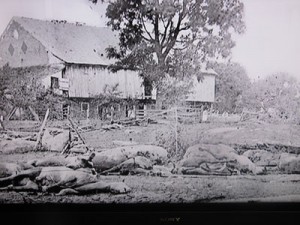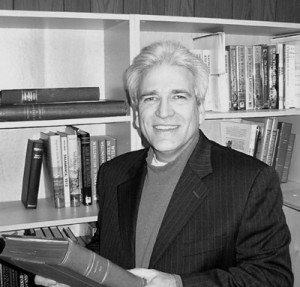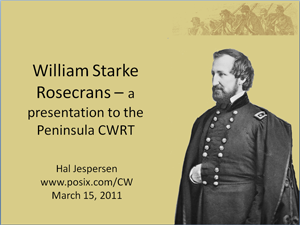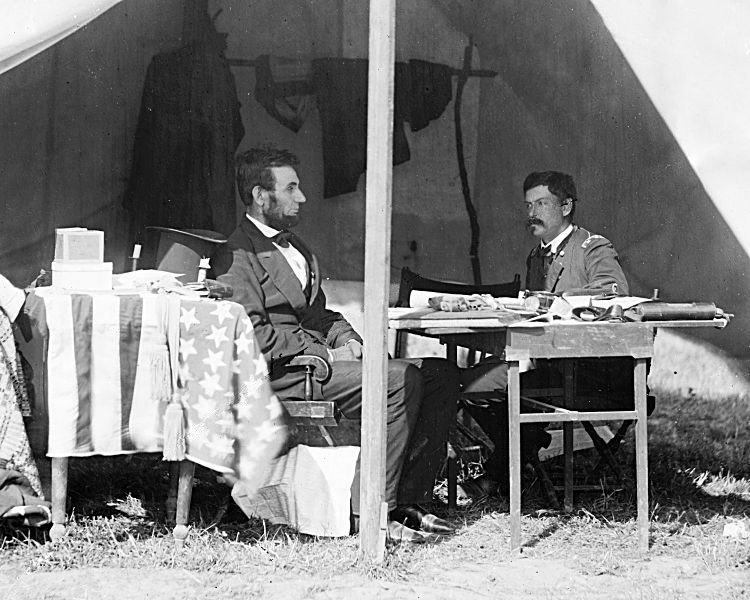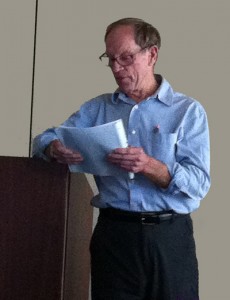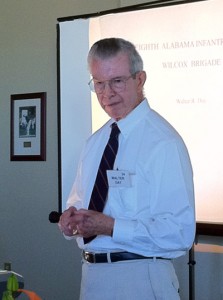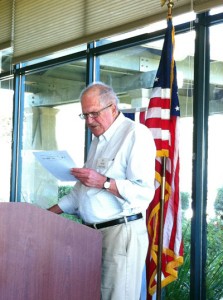Bob Hildenbrand on “From Combat to Slave Labor: The WWII Berga Affair”
Charlie Sweeny provided the following description of Bob’s talk:
The Germans selected American POWs who were Jewish and sent a group of them to a construction site. These U.S. 100th Infantry Division soldiers were to dig pits in the cliffs to enable synthetic fuel facilities to be built. Berga is in eastern Germany south of Leipzig. The men were subjected to very hard labor and very short rations. Bob lost half his weight.
There were already Jewish prisoners at the site when the POWs arrived. The 350 GIs were to dig holes and dump the dirt into the nearby river. The project was closed down in March of 1945. The POWs were then marched 100 miles west until they were liberated on 23 April by the U.S. 11th Armored Division.
Of the 350 Battle of the Bulge POWs, 75 died before the war’s end. One half just gave up, stopped socializing and died. Marasmus.
Bob survived the war, went on to earn a PhD in Physical Chemistry at the University of California Berkeley. He put his experiences behind him until he got a telephone call from a researcher. He was asked, “What did he think of the German treatment of Jewish POWs?” Bob did not realize if there were Jews or not among the soldiers.
Two years later Bob received a check for $23,000 payment from the German Government for forced labor. A book, “Soldiers and Slaves” by Roger Cohen, details the story.
After the war, on the GI Bill, Bob attended Johns Hopkins University and then the University of California at Berkeley, culminating in a Ph.D. in Physical Chemistry. For the last 40 years, Bob has been with the Physical Sciences Division of SRI in Menlo Park.

